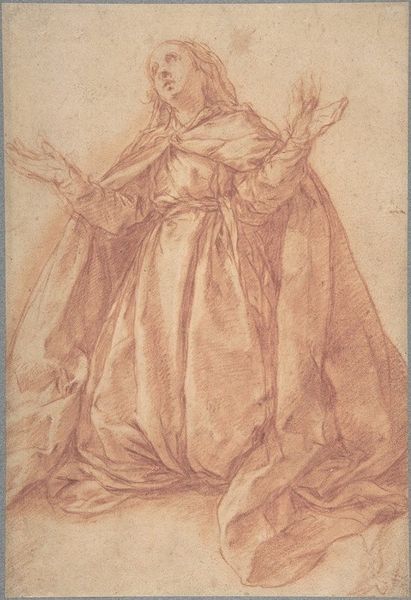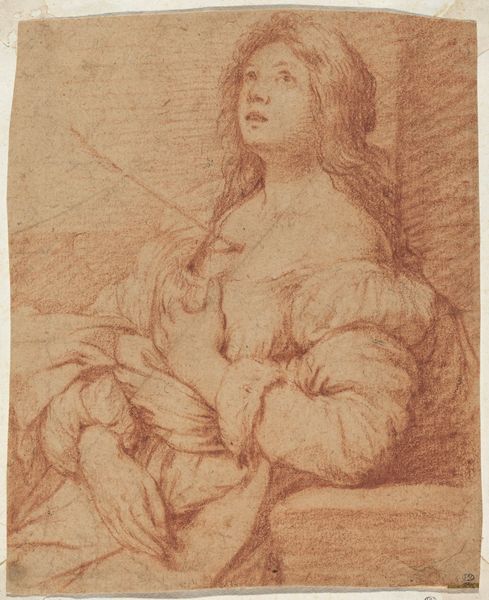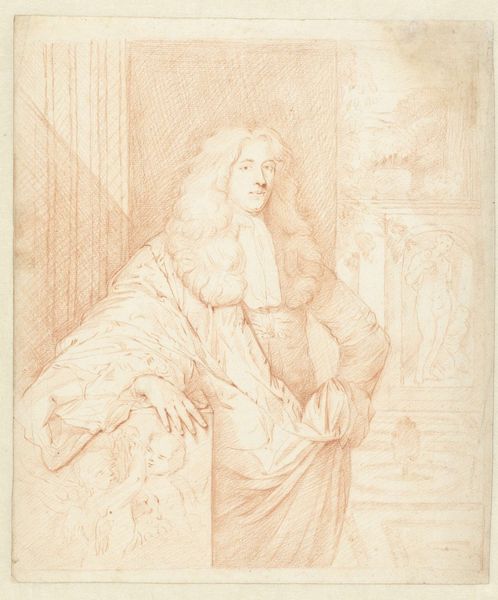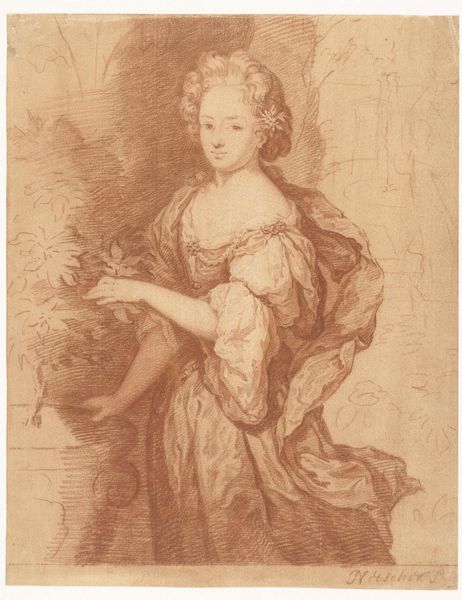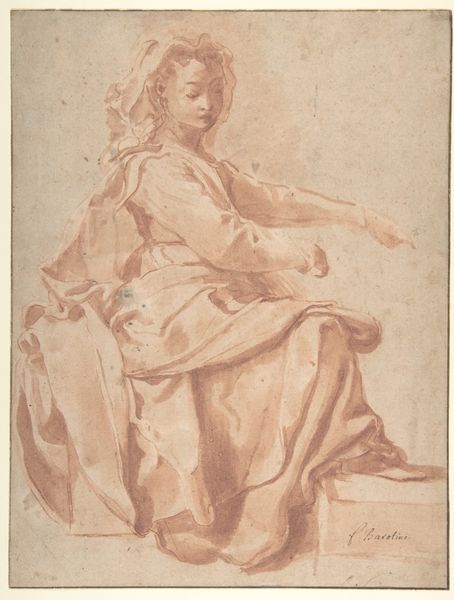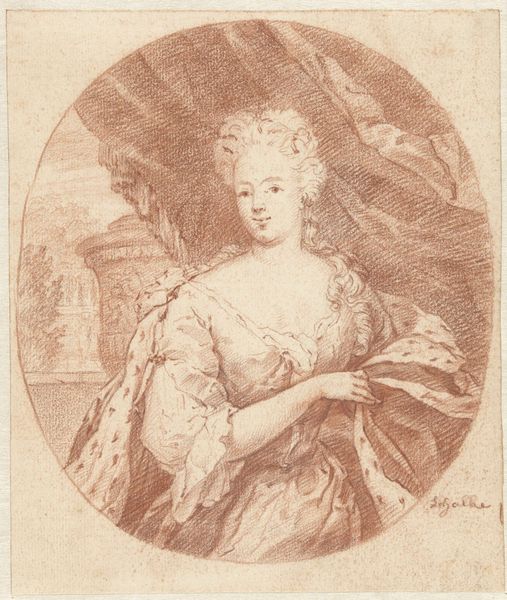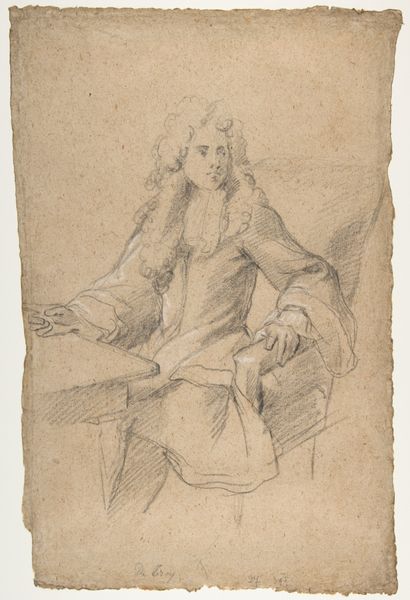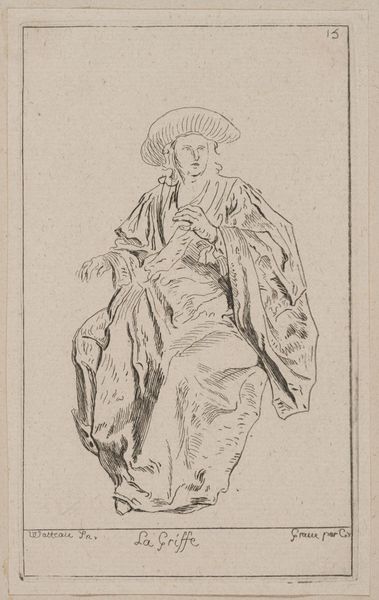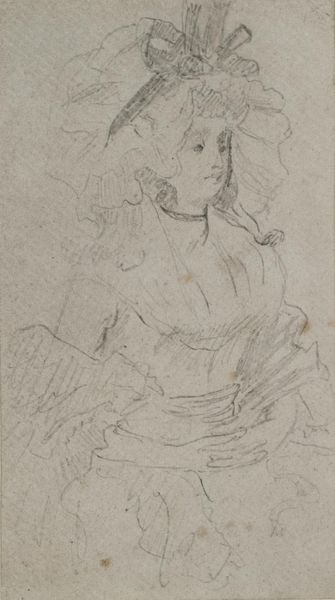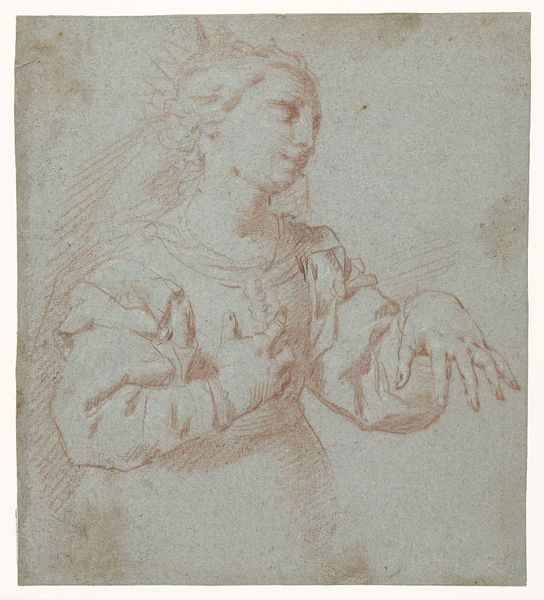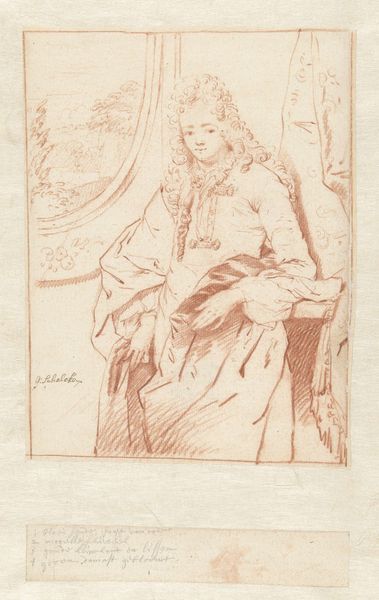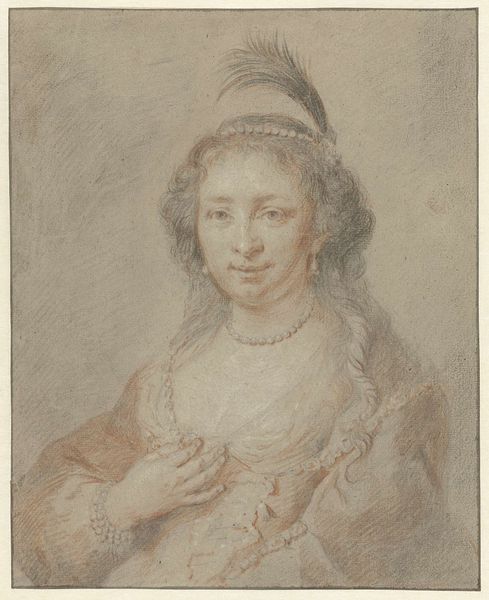
drawing, pencil, charcoal
#
portrait
#
pencil drawn
#
drawing
#
baroque
#
charcoal drawing
#
pencil drawing
#
pencil
#
charcoal
Dimensions: height 268 mm, width 202 mm
Copyright: Rijks Museum: Open Domain
Editor: Here we have Godfried Schalcken’s "Portret van een staande onbekende man," made sometime between 1653 and 1706. It’s a drawing done with pencil and charcoal. The warm, reddish-brown tone gives it a sense of intimacy. What societal norms might this portrait reflect, and how would its display have impacted viewers at the time? Curator: That's a great question! Consider that portraits during this period were largely commissioned, reinforcing status. Schalcken's portrait, displayed perhaps in a private home, becomes a subtle statement. Whose story do you think this work tells, and more importantly, *whose* story is left untold or actively obscured? Editor: So, the act of commissioning itself speaks volumes. Does the sitter's anonymity play into that at all? The Rijksmuseum labels him as ‘unknown.’ Curator: Absolutely. The "unknown man" implies a story we can't fully access. But let’s look at his clothing, his pose. Can those details allow a deeper dive? Were sumptuary laws, for example, a factor in portraying wealth at the time, especially during periods of social upheaval or economic disparity? Editor: He certainly looks like someone of means, given the elaborate wig and clothing. Perhaps displaying this was an active role for those in power or an expression of privilege for specific groups in Dutch society during that time. It really encourages viewers to be aware of the power dynamics. Curator: Precisely. Think about what the very act of looking implies. The historical lens lets us interrogate what’s shown – and what’s deliberately omitted – shaping our perception of the past and prompting reflection on power. Editor: That’s a fantastic perspective; thank you! I'm going to consider this in every portrait I study from now on.
Comments
No comments
Be the first to comment and join the conversation on the ultimate creative platform.
